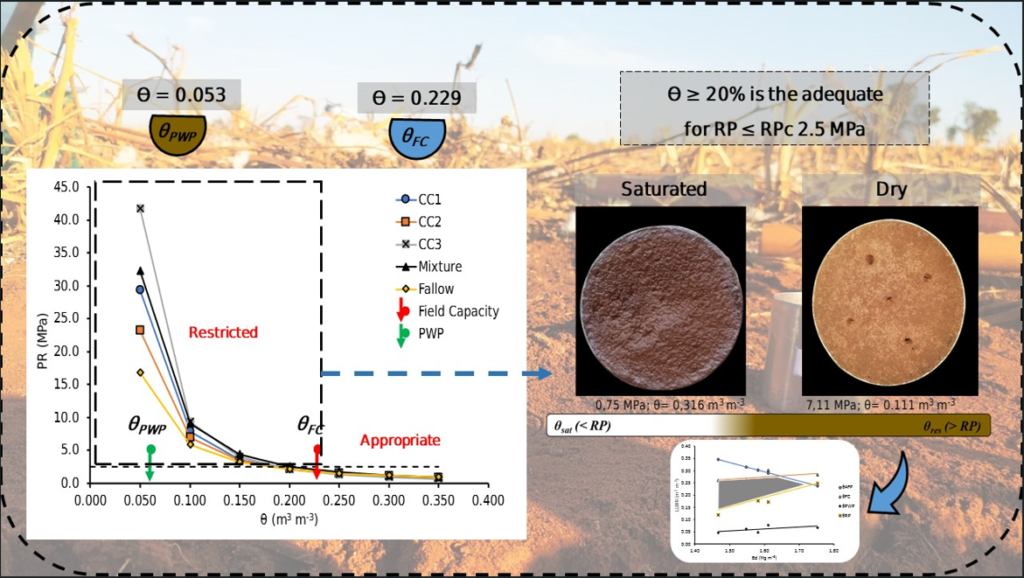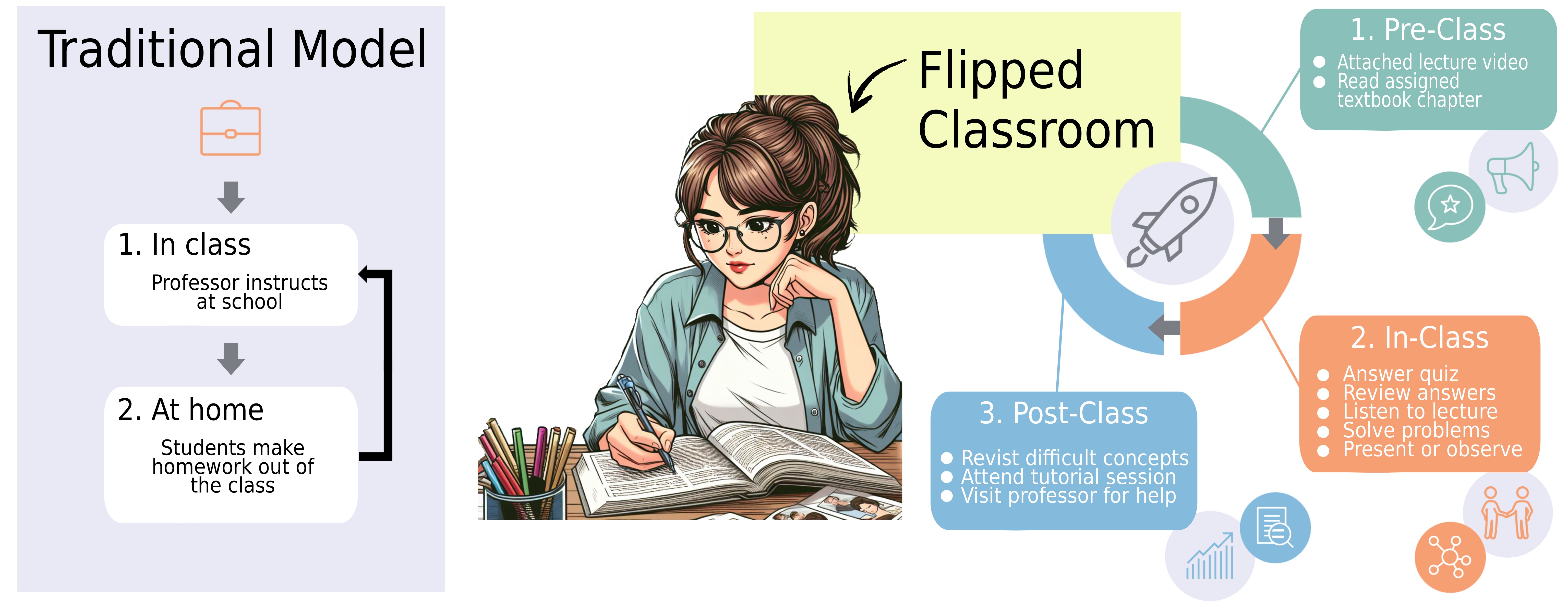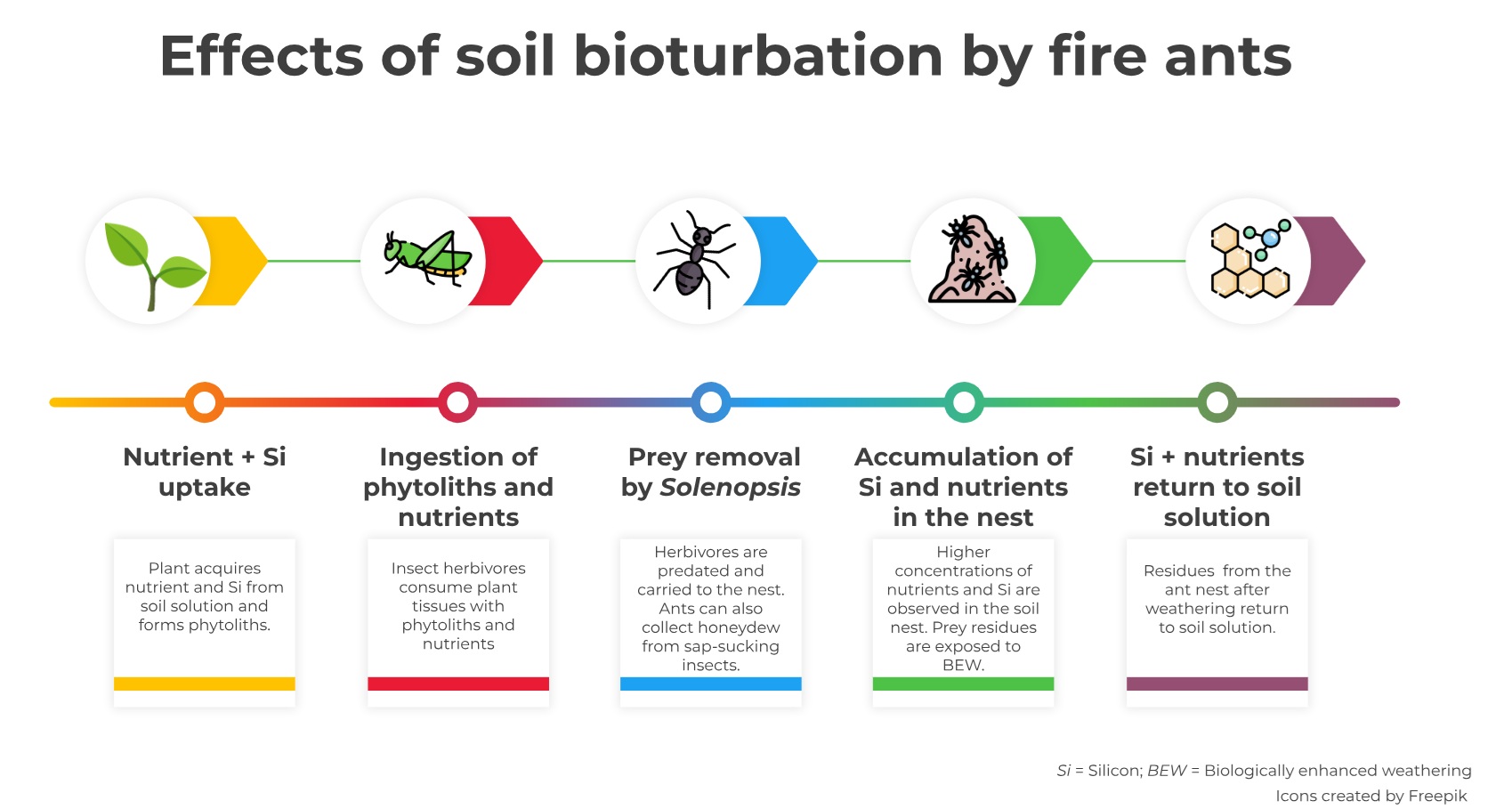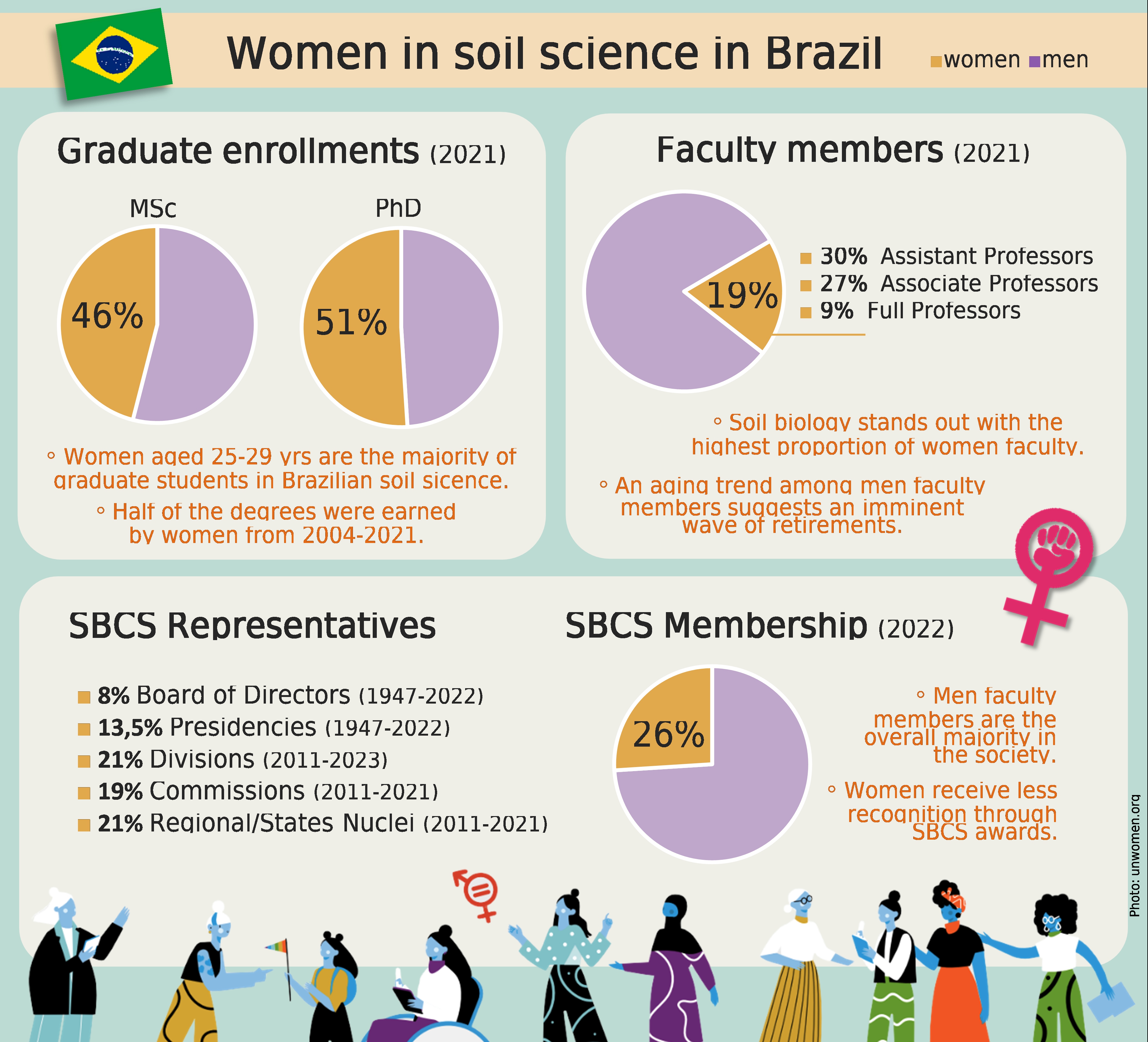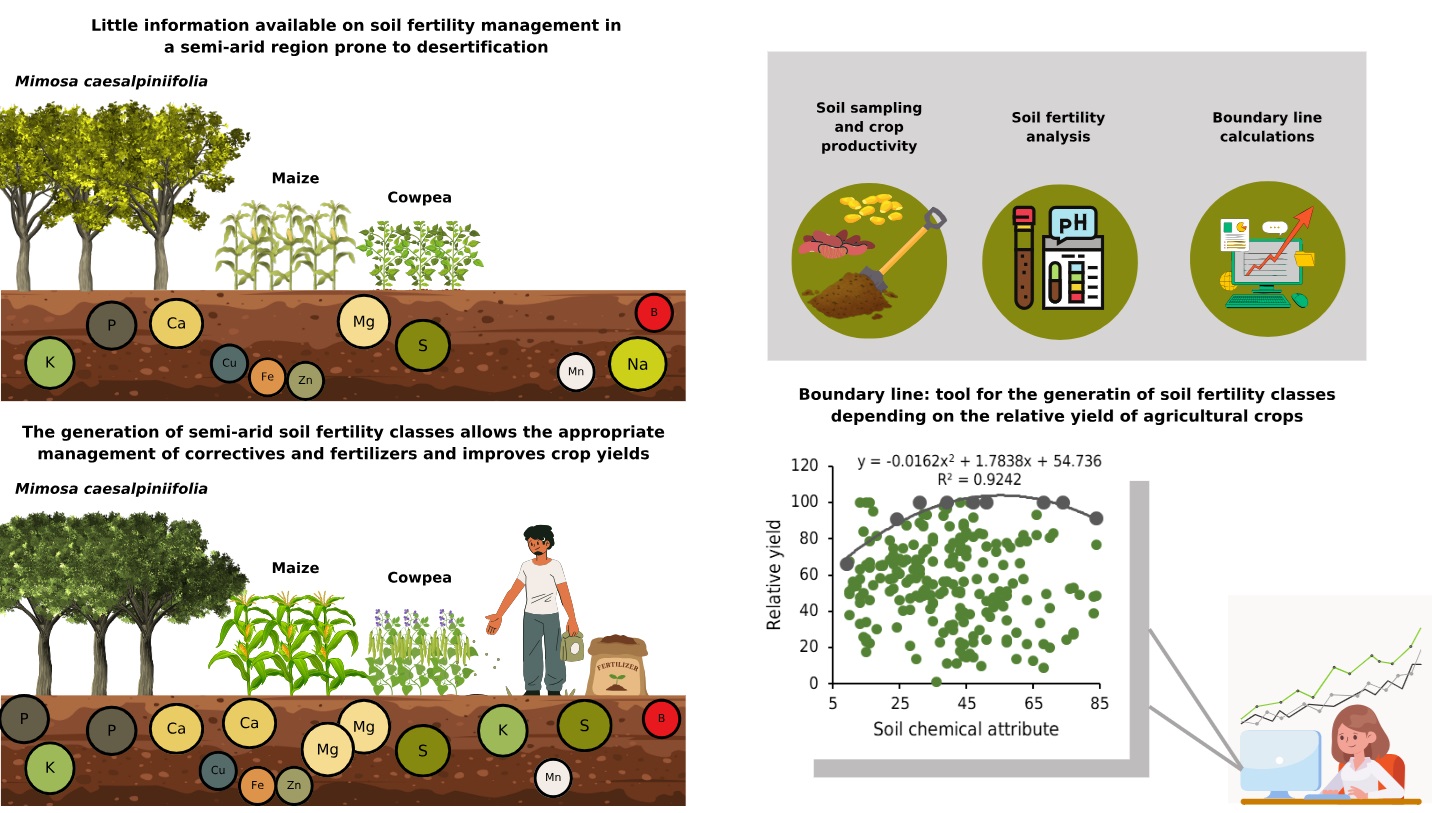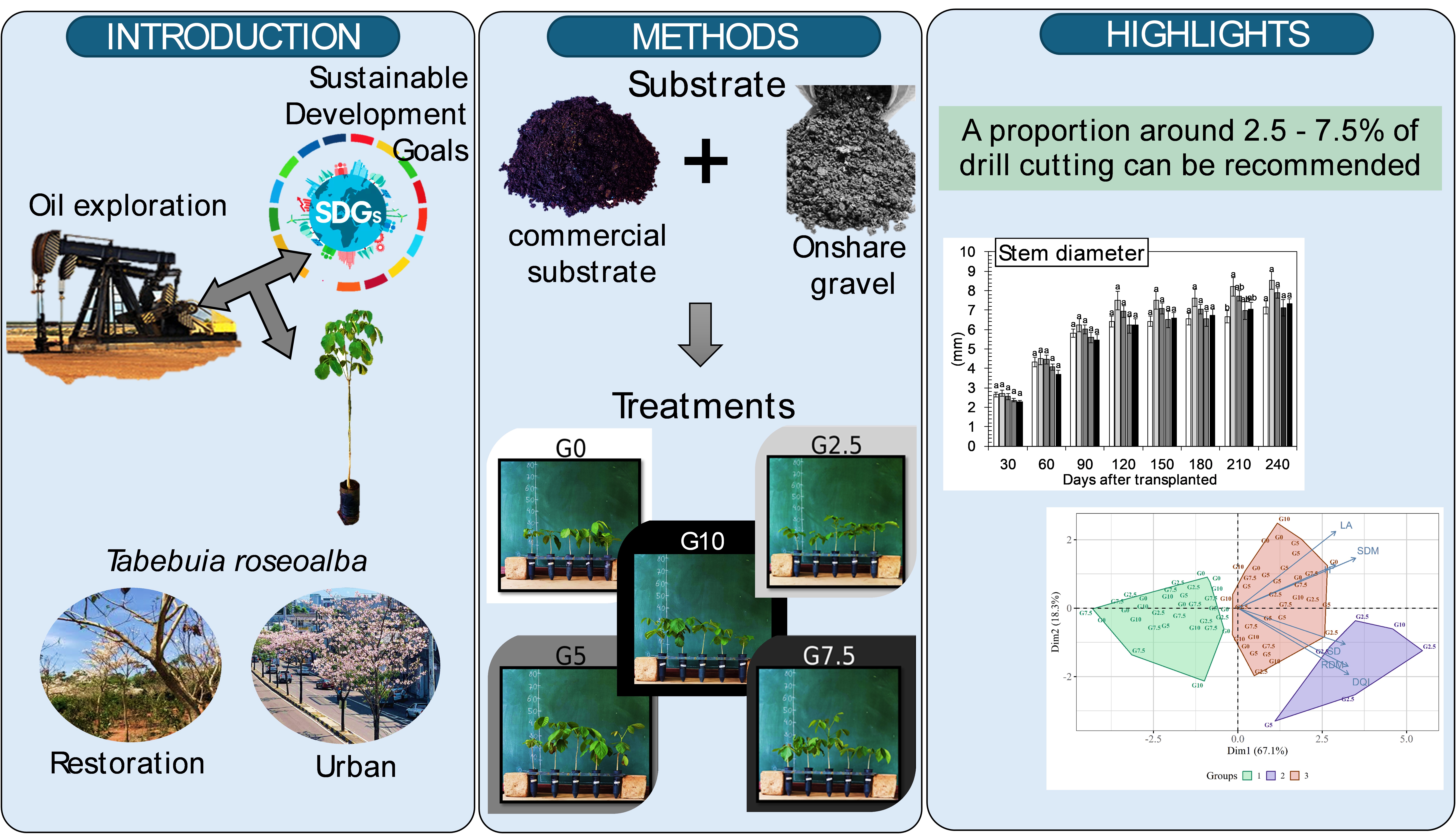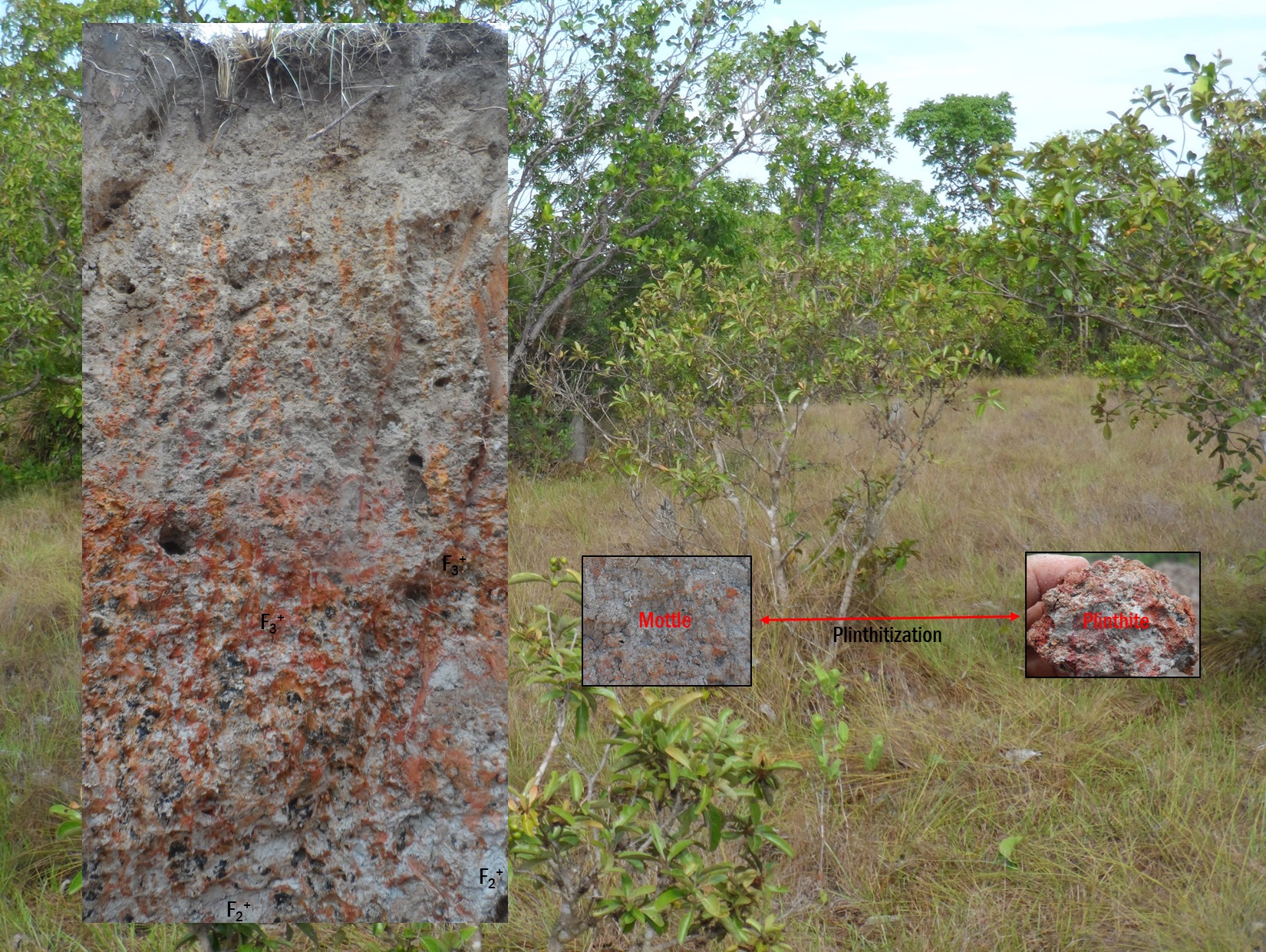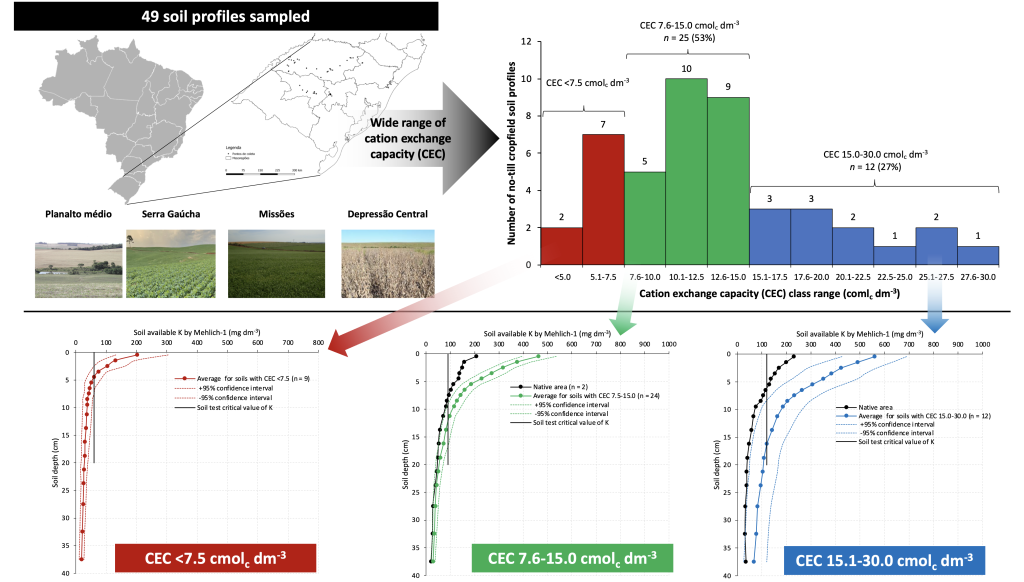Cropping and soil management systems effects on soil organic matter fractions in diversified agricultural fields in the Cerrado
25/Nov/2024
ABSTRACT Soil organic matter (SOM) dynamics can be significantly influenced by various cultivation practices, particularly under environmental and edaphic conditions that enhance and accelerate the transformations of organic materials such as straw, root biomass, and organic fertilizers. This study aimed to evaluate the impact of different cultivation and soil management systems on SOM fractions in agricultural areas of the Cerrado Goiano region. The research was conducted across three areas with diverse production systems: 1) BV area, including soybean monoculture (SM01), […]
Cover crops influence the physical hydric quality of a tropical sandy soil under no-tillage cotton cropping
25/Nov/2024
ABSTRACT Reduced stability and structural resilience expose sandy soils to physical degradation under intensive production systems. This study aimed to evaluate the influence of different cover crops (CC) under no-tillage system (NTS) cotton cropping, grown either individually or in combination, on the soil physical quality (SPQ) of a sandy loam Oxisol (Latossolo) in southeastern Brazil. To quantify the effects of CC on soil physical quality indicators, an experiment in randomized blocks design was implemented with the treatments: CC1: single cultivation […]
Education of 21st century: A proposal of flipped classroom strategy to teach Soil Biology
25/Nov/2024
ABSTRACT Flipped Classroom (FC) approach has gained widespread acceptance across various education levels, particularly in higher education settings. Flipped Classroom represents a method employed to stimulate student learning, enhance academic performance, and foster student motivation and engagement. This approach involves the utilization of pre-class materials such as recorded lectures and multimedia resources for student review, while class time is dedicated to exercises, projects, or discussions. Numerous studies have documented enhanced learning outcomes among students of mathematics and science through FC […]
Influence of Solenopsis invicta Buren on soil chemical properties, silicon pools, and phytolith assemblages in organic agricultural soils
25/Nov/2024
ABSTRACT Ants mediate ecosystem services that can modulate crop performance and overall agroecosystem functioning. Our study investigated how the activity of Solenopsis invicta Buren (Hymenoptera: Formicidae) influences soil chemical properties, soil silicon pools, and soil phytoliths. We hypothesized Solenopsis invicta Buren activity would increase the macronutrient content, available silicon for plants (PASi), and amorphous silicon (ASi) in nest soils, which is related to changes in the phytolith assemblage. This study was conducted on agricultural soil under organic management, covering an […]
Differences between Pseudobombax grandiflorum and Bauhinia forficata in terms of responsiveness and dependence to mycorrhiza
25/Nov/2024
ABSTRACT The benefits promoted by arbuscular mycorrhizal fungi (AMF) to forest species seedlings include higher growth rate, better nutrition, and higher survival rates. Inoculation with AMF may facilitate revegetation of degraded lands, although it depends on symbionts and environmental conditions, such as soil P availability. In this sense, the lack of information justifies the carrying out of studies of this nature. We investigated the dependence and responsiveness of two forest species native to the Atlantic Forest, Pseudobombax grandiflorum and Bauhinia […]
Gender equity in soil science in Brazil: Still at the beginning of a long journey
25/Nov/2024
ABSTRACT Current studies have highlighted a significant gender disparity in the field of soil science. However, the scarcity of research and data on this issue can hinder the urgent need to address it and effect meaningful changes. This was the first demographic survey of Brazilian soil science, focusing on gender composition over time at different academic and professional levels, as well as peer recognition. We examined the metrics of students and faculty from all Brazilian soil science graduate programs (2004-2021), […]
Critical levels and fertility classes of soils with high-activity clay in the Brazilian semi-arid region
04/Nov/2024
ABSTRACT Soil fertility evaluation is important for adopting conservation management and adequate nutrient supply. The objective of this study was to identify critical levels and soil fertility classes using the boundary line method for rainfed crops (corn, cowpea and sabiá [Mimosa caesalpiniifolia]) in the Brazilian semi-arid region. A database of 226 soil fertility analyses of samples from the 0.00-0.20 m soil layer, and corn, cowpea and sabiá yields from Ceará State was used to generate interpretation classes (at 80 and […]
Drill cuttings from oil exploration improve properties of substrate and growth of Ipê-branco (Tabebuia roseoalba) seedlings
23/Oct/2024
ABSTRACT More information is needed on the potential of using drill cuttings (crushed rocks) from the oil industry in agriculture and forestry. An experiment in forest nursery was carried out to evaluate the influence of substrates formulated from onshore gravel on characteristics of Ipê-branco (Tabebuia roseoalba) seedlings (i.e., growth, quality, and nutrition). We used five gravimetric proportions of gravel from drill cuttings mixed with Pinus-bark – commercial substrate (Mecplant® Florestal 3): control with only commercial substrate and zero gravel (G0), […]
Chemical and mineralogical constitution of redoximorphic features and mechanism of formation of Plinthosols from the Araguaia River plain, Brazil
11/Oct/2024
ABSTRACT Currently in Brazil, large grain cultivation projects on Plinthosols are a reality, however, there is little or no knowledge of the real mechanism of formation of the plinthite feature, in addition to what is reported in the literature as being a product of oxidation-reduction processes of iron element. This study evaluates iron redoximorphic features and investigates their chemical and mineralogical composition in two profiles of Plinthosols from the Araguaia River plain (P1 and P2). The study strengthens the understanding […]
Potassium distribution in soil profiles under no-tillage system
11/Oct/2024
ABSTRACT Potassium (K) vertical mobility in soils has often been overestimated and used as a rationale for recommending the broadcast application of this nutrient in fertility management programs, especially in soils with low cation exchange capacity (CEC). This study aimed to evaluate the vertical distribution of K in two land uses: areas with natural vegetation and crop fields managed under no-tillage (NT) fertilized with K. For this purpose, 49 soil profiles from the Brazilian subtropical state of Rio Grande do […]

